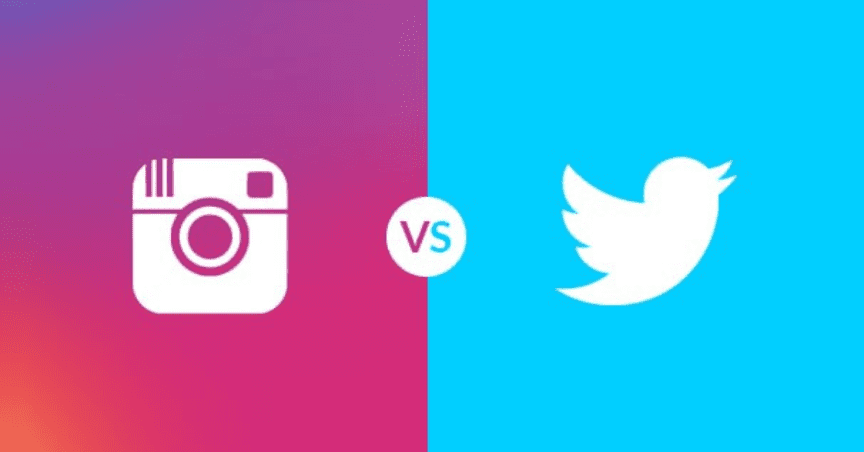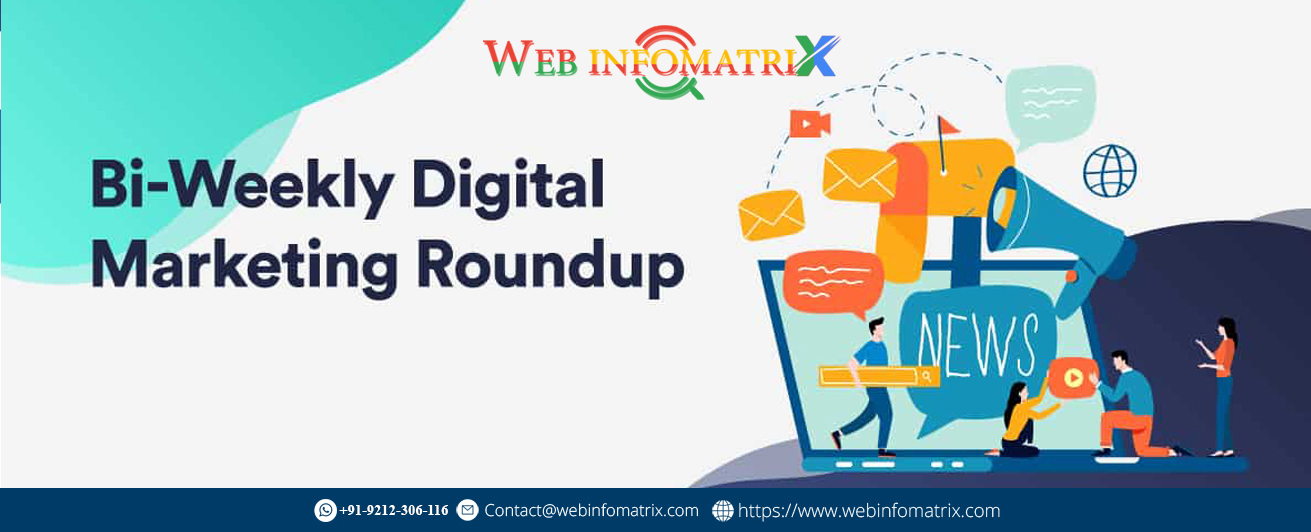Twitter vs. Instagram: Which is Best for Your Brand
In the digital age, choosing the right social media platform for your brand is crucial for maximizing reach and engagement. "Twitter vs. Instagram: Which is Best for Your Brand" explores the unique features and benefits of both platforms to help you make an informed decision. Whether you're looking to leverage Twitter's real-time updates and conversational nature or Instagram's visual storytelling and rich engagement metrics, this guide provides insights into how each platform can align with your brand's goals. Discover key differences, audience demographics, and strategies to effectively harness the power of Twitter and Instagram for your brand's success.

In the ever-evolving landscape of social media, brands face the ongoing challenge of selecting the right platforms to effectively engage their audiences. Twitter and Instagram are two of the most prominent social media platforms, each offering unique features and benefits. This comprehensive analysis will explore the strengths and weaknesses of both platforms to help brands determine which one aligns best with their marketing objectives.
Understanding the Core Differences Between Twitter and Instagram
Before delving into the specifics of each platform, it is crucial to understand the core differences that set Twitter and Instagram apart. Twitter is primarily a text-based platform that allows users to share short messages, known as tweets, along with links and images. It thrives on real-time conversations, trending topics, and quick updates. On the other hand, Instagram is a visually-driven platform focused on sharing images and videos. Its appeal lies in creating a visually captivating feed that showcases brands’ stories and aesthetics.
Audience Demographics: Who Uses Each Platform?
Understanding the audience demographics is essential when choosing the right platform for your brand. Twitter attracts a diverse audience, with a slightly higher percentage of users aged between eighteen and thirty-four. This platform is particularly popular among news enthusiasts, professionals, and influencers who seek timely updates and conversations.
In contrast, Instagram skews younger, with a significant portion of its user base consisting of individuals aged between eighteen and twenty-nine. It is a favored platform among millennials and Generation Z, who gravitate toward visual content and storytelling. Brands targeting younger audiences and visual-centric products may find Instagram to be a more suitable platform.
Content Formats: What Works Best on Each Platform?
The type of content that performs well on Twitter differs significantly from what resonates on Instagram. Twitter's character limit encourages concise messaging and quick updates. Brands can leverage Twitter for real-time announcements, customer service interactions, and engaging conversations with their audience. Hashtags play a vital role in extending the reach of tweets and connecting with broader conversations.
Conversely, Instagram emphasizes visual storytelling. Brands can utilize high-quality images, videos, and graphics to convey their messages. The platform offers various content formats, including Stories, Reels, and IGTV, allowing brands to experiment with different styles of engagement. Captions on Instagram can be longer, providing an opportunity for storytelling that enhances the visual content.
Engagement: How Users Interact on Each Platform
Engagement rates on Twitter and Instagram vary due to the nature of each platform. Twitter's fast-paced environment encourages real-time interactions and discussions. Users can retweet, like, and reply to tweets, facilitating conversations around trending topics. Brands can utilize Twitter polls and threads to engage their audience and gather feedback.
In contrast, Instagram prioritizes visual engagement. Users are more likely to interact with visually appealing content through likes, comments, and shares. The Stories feature allows brands to engage their audience with ephemeral content, fostering a sense of urgency and excitement. Additionally, the platform's algorithm promotes engagement by showcasing content that resonates with users, making it crucial for brands to create visually captivating posts.
Brand Voice and Messaging: Finding Your Fit
The tone and style of messaging on Twitter and Instagram can differ significantly. Twitter often favors a more casual and conversational tone, allowing brands to showcase their personality and engage in light-hearted banter. Brands can leverage humor, wit, and timely responses to connect with their audience in real time.
On the other hand, Instagram demands a more polished and curated approach to branding. The visual nature of the platform necessitates high-quality images and thoughtful captions. Brands should focus on creating a cohesive aesthetic and storytelling that aligns with their overall brand identity. Influencer collaborations are also prevalent on Instagram, allowing brands to reach new audiences through trusted voices.
Advertising Opportunities: Which Platform Offers More?
Both Twitter and Instagram provide robust advertising options, but the strategies differ. Twitter ads allow brands to promote tweets, accounts, or trends. They can target specific audiences based on interests, keywords, and demographics. Twitter’s real-time nature makes it an excellent platform for promoting time-sensitive offers and events.
Instagram, owned by Facebook, offers advanced targeting capabilities through Facebook Ads Manager. Brands can create visually appealing ads that seamlessly integrate into users’ feeds. With options for photo, video, carousel, and Stories ads, brands have the flexibility to showcase their products in innovative ways. Instagram's emphasis on visual storytelling makes it a compelling choice for brands looking to create immersive advertising experiences.
Measuring Success: Analytics and Insights on Each Platform
Analytics play a crucial role in evaluating the effectiveness of social media strategies. Twitter provides analytics tools that allow brands to track tweet performance, engagement rates, and audience demographics. These insights help brands refine their messaging and optimize their content strategy.
Instagram also offers robust analytics through Instagram Insights, which provides data on post performance, audience engagement, and follower demographics. Brands can analyze which content resonates most with their audience and adjust their strategy accordingly. Understanding performance metrics is essential for continuous improvement and maximizing the impact of social media efforts.
The Impact of Trends and Virality
Both Twitter and Instagram are influenced by trends and virality, but the mechanisms differ. Twitter's trending topics and hashtags allow brands to join conversations in real time. Brands that engage with trending topics can gain visibility and reach new audiences. Quick responses to current events can enhance brand relevance and engagement.
In contrast, Instagram trends often revolve around visual content styles, challenges, and hashtags. Brands can participate in trending challenges or use popular hashtags to increase their visibility. Collaborating with influencers who are part of these trends can also amplify reach and engagement.
Integrating Twitter and Instagram for a Comprehensive Strategy
While Twitter and Instagram offer distinct advantages, brands can benefit from integrating both platforms into a comprehensive social media strategy. Using Twitter for real-time updates and customer engagement, while leveraging Instagram for visually appealing content and storytelling, can create a well-rounded brand presence.
By cross-promoting content between the two platforms, brands can maximize their reach and engage their audiences effectively. For instance, a brand can share behind-the-scenes content on Instagram and promote related tweets on Twitter. This approach allows for a cohesive brand narrative that resonates across different formats.
Considerations for Your Brand's Goals and Resources
When deciding between Twitter and Instagram, it is essential to consider your brand’s specific goals and available resources. If your brand focuses on real-time engagement, customer service, or trending conversations, Twitter may be the ideal platform. On the other hand, if your brand emphasizes visual storytelling, lifestyle branding, and aesthetics, Instagram could be the better choice.
Additionally, assess your available resources, including time, content creation capabilities, and audience insights. It may be beneficial to conduct audience research to understand where your target demographic is most active and engaged. This data can inform your decision and help you allocate resources effectively.
Emerging Trends: The Future of Twitter and Instagram
The social media landscape is continuously evolving, and staying abreast of emerging trends is crucial for brands. Twitter is focusing on enhancing its platform to support more interactive and engaging experiences, including Spaces for audio conversations. Instagram is also investing in video content, with Reels becoming increasingly popular and a priority for the platform.
Brands should remain adaptable and open to experimenting with new features as they emerge. Monitoring changes in user behavior and platform updates will help brands refine their strategies and stay relevant in the dynamic social media environment.
Choosing the Right Platform for Your Brand
Ultimately, the decision between Twitter and Instagram depends on your brand’s objectives, target audience, and available resources. Each platform offers unique advantages that can significantly impact your marketing efforts. Twitter is an excellent choice for brands looking to engage in real-time conversations and leverage trending topics. In contrast, Instagram is ideal for brands that prioritize visual storytelling and creating a curated aesthetic.
By understanding the strengths and weaknesses of each platform, brands can make informed decisions that align with their goals and resonate with their audiences. Whichever platform you choose, consistency and authenticity in your messaging will be key to building a strong brand presence in the competitive social media landscape.
FAQs
Which platform is better for real-time engagement?
Twitter is better for real-time engagement due to its focus on quick updates and conversations.
Can brands use both Twitter and Instagram?
Yes, brands can effectively use both platforms to reach different audiences and achieve their marketing goals.
What type of content works best on Instagram?
High-quality images, videos, and visual storytelling content work best on Instagram.
How do I measure success on these platforms?
Both Twitter and Instagram offer analytics tools to track performance, engagement, and audience insights.
Which platform is more effective for advertising?
Both platforms provide effective advertising options, but Instagram's advanced targeting through Facebook Ads Manager offers more extensive capabilities.
Get in Touch
Website – https://www.webinfomatrix.com
Mobile - +91 9212306116
Whatsapp – https://call.whatsapp.com/voice/9rqVJyqSNMhpdFkKPZGYKj
Skype – shalabh.mishra
Telegram – shalabhmishra
Email - info@webinfomatrix.com
What's Your Reaction?




















